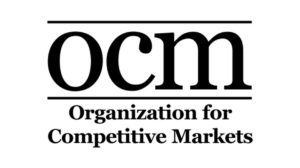 .
. 
The Competition Problem in Beef
Every day, ranchers and consumers confront the fallout from decades of massive consolidation in the beef processing segment of the supply chain. Four large meat-packing companies control over 80% of the market. This domestic beef packing cartel has extracted billions of dollars of ill-gotten profits from ranchers and consumers. Moreover, a lack of competition limits ranchers options for selling their products and pushes down the prices they receive for them. At the other end of the supply chain, the cartel raises consumer prices for beef at the grocery store.
The “squeeze” on U.S. ranchers and consumers also comes from standards that allow products to be labeled “Made in the USA,” even if animals are imported from abroad and slaughtered and processed in the U.S. This makes it difficult for smaller, independent ranchers and processors in the U.S. to differentiate their products. The squeeze also prevents consumers from exercising their right to fair prices and quality; but also the right to purchase their beef from a variety of sources, including smaller, innovative U.S. ranchers and processors.
The beef dollar statistics tell a concerning story. Between 1980 and 2020, the retail sector’s share of the beef dollar has grown by about 65%, while the packer’s share increased even more—by over 70%. Over the same period, ranchers’ share of the beef dollar dropped precipitously by about 40%. And since mid-2015, prices for cattle have declined, while the price of retail beef has increased, creating a widening gap. The decline in independent family animal agriculture, driven in large part by consolidation in food and agriculture, has led to the deterioration of the rural U.S. economy.
Signs of Progress
The need to address the high concentration and lack of market competition that has fostered a dire situation in the U.S. beef sector is increasingly recognized at the uppermost political and economic levels. Actionable proposals are badly needed to give smaller ranchers and processors a level playing field to access markets and distribute their products, and ensure that consumers pay fair prices and receive high quality beef products. Strong public and private antitrust enforcement to break the power of the packer cartel is essential. But complementary policy initiatives are also needed to bootstrap enforcement by creating a roadmap for improving market access, increasing geographic diversity, and crafting appropriate “rules of the road” that will foster the growth of an independent ranching and processing sector.
There are currently a number of bipartisan legislative and administrative initiatives designed to remedy the damage from the accretion and exercise of market power in the beef supply chain. Among these initiatives are: a rulemaking that would reestablish and reinvigorate the Packers and Stockyards Act (PSA) of 1921; a legislative proposal to provide for much stronger enforcement of the PSA; an Executive Order that includes incentives to expand independent meat processing; proposed measures to increase contracting and market pricing transparency; and congressional pressure for a U.S. Department of Justice (DOJ) investigation of anticompetitive conduct by the major meat packers.
policy goals that promote competition
The breadth and depth of advocacy in food and agriculture is significant. Advocacy groups focus on a host of issues, including antitrust enforcement and competition policy, the role of farmers and rural communities, fairness to consumers, independent food systems, and food security. OCM and AAI encourage an integrated policy approach to support the growth of a competitive and independent ranching and processing sector. This includes vigorous antitrust enforcement, pro-competitive regulation, and constructive legislation. Policies designed to promote the growth and stability of such a sector include, but are not limited to:
- Antitrust enforcement against the 4-firm oligopoly that dominates the processing segment of the beef supply chain and revisiting merger enforcement policy in retail grocery
- Improving market access through pricing reforms and increased transparency
- Scrutinizing the anticompetitive incentives associated with concentrated packer integration into cattle supply and conduct designed to exclude smaller ranchers and processors
- Product labeling that promotes independent suppliers’ ability to differentiate the quality/origin of their beef and consumers’ right to choose
- Food inspection processes that differentiate large scale v. smaller scale processing plants based on scale and efficiency
- Supplier diversity as a goal of government food procurement policy
- Consumer education on the importance of diversity and resiliency in the beef supply chain
The foregoing goals, and policies needed to achieve them are fundamentally more ambitious than simply improving access to existing markets through subsidies and lowering the transactions costs experienced by smaller producers. Rather, they are designed to inject needed competition to support the diversification of the highly bottlenecked beef supply chain we see in the U.S. today. These goals, taken together, would better promote competition through the aggregate impact of smaller ranchers and processors; spur the growth of new regional markets for differentiated products—including high quality domestic (or made in the USA) beef; and support the development of a more resilient supply chain that incorporates multiple channels to the consumer. Needless to say, such competition would promote the livability of the rural U.S. and durability of the family farm and ranch. OCM and AAI strongly endorse keeping these goals at the top of the Biden Administration’s antitrust enforcement and USDA policy agenda.

